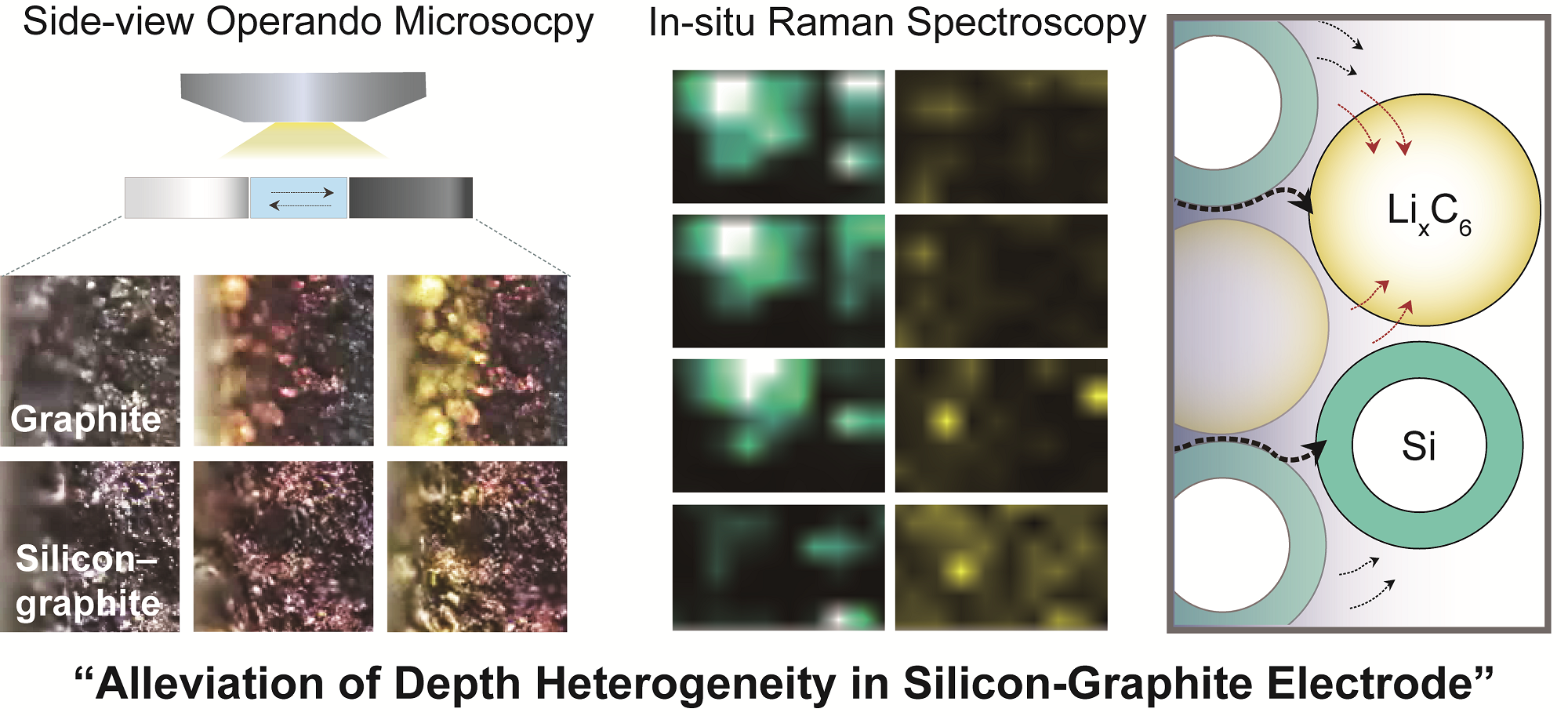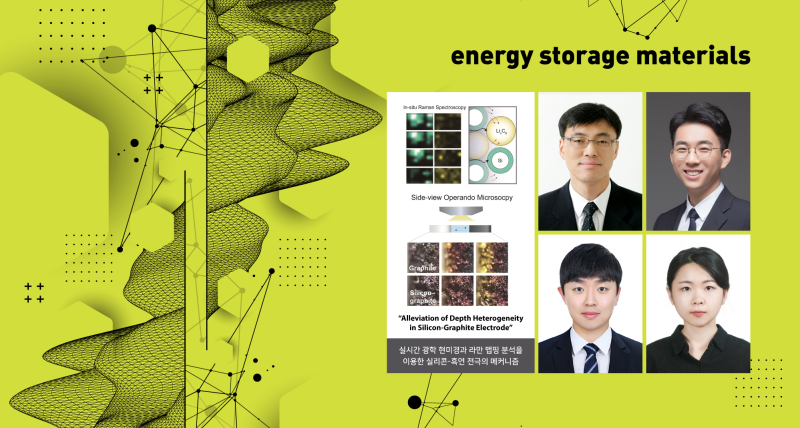A research team, jointly led by Professor Hyun-Wook Lee and Professor Kyeong-Min Jeong in the School of Energy and Chemical Engineering at UNIST investigated the complex dynamics of a silicon–graphite blended electrode using side-view operando optical microscopy, highlighting the proper mechanisms of SOC heterogeneity. The research team anticipates that their findings could pave new avenues for a more sophisticated design of high-energy Si-graphite anodes.

Figure 1. Schematic image, showing the alleviation of depth heterogeneity in silicon-graphite electrode.
In this work, the research team investigated the interparticle interaction between Si and graphite, focusing on depth heterogeneity under operando optical microscopy, which is suitable for electrode-level observation. They further analyzed each frame to differentiate between graphite and Si behaviors based on color and volume expansion (See Figure 1). Their findings demonstrated that silicon (Si) could alleviate the heterogeneity of graphite electrodes through side-view operando microscopy and its image processing.
According to the research team, graphite displays depth heterogeneity during lithiation owing to its orientation-dependent diffusion and sluggish kinetics at high state-of-charge (SOC). However, the phase distribution of a Si–graphite anode was more homogeneous throughout competitive lithiation. In-situ Raman spectroscopy further revealed that graphite lithiation was facilitated nearby Si particles, which would be considerably more effective in suppressing depth inhomogeneity.
The present results suggest that the alleviation of depth heterogeneity is attributed to Si kinetics through its fast surface diffusion and solid-solution mechanism, resulting in concurrent lithiation. Additionally, a high kinetic overpotential of Si lithiation would induce graphite lithiation, especially on the deeper side of the electrode. Such results in the alleviation of depth heterogeneity, according to the research team, are notable because Si can also reduce electrode thickness.
“[A] simple blending of Si and graphite could not improve high-rate performance as Li-ion accumulation at the surface electrode was evident in graphite, leading to cell deterioration,” said the research team. “It can be the result of complex properties and diverse kinetic constraints.” They further added, “Consequently, Si–graphite anodes should be modified to compensate for the limitation, and an understanding of the mechanism in the blended electrode is critical for designing advanced batteries.”
This study was conducted with the support of the Ulsan Institute of Science and Technology’s future-leading specialization project, the Ministry of Science and ICT and the Korea Research Foundation’s new research project, the Climate Change Response Technology Development Project, and Samsung SDI. It was published online on February 19 in Energy Storage Materials, a world-renowned international journal in the field of energy materials.
Journal Reference
Juyoung Kim, Min-Ho Kim, Youngmin Kim, et al., “Unveiling the role of electrode-level heterogeneity alleviated in a silicon-graphite electrode under operando microscopy,” Energy Storage Materials, (2023).












